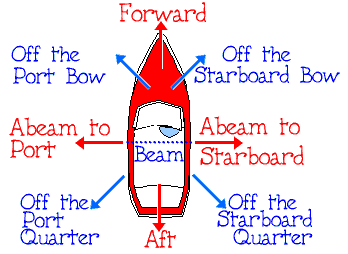

Gulf and Caribbean Sea, the northern and eastern coasts of South America, the North Sea, the Black Sea and the Mediterranean Sea.īackhaul - A deviation to move cargo on the return leg of a voyage for the purpose of minimizing ballast mileage and thereby reducing transportation cost. Sometimes called ship's articles.Ītlantic Basin - The Atlantic Ocean and the ports and seas surrounding it, including the eastern seaboard of the United States and Canada, the U.S. = 141.5 - 131.5\Relative Density 60F/60FĪrticles of Agreement - The Document containing all particulars relating to the terms of agreement between the Master of the vessel and the crew. The relation between API gravity and relative density (formerly called specific gravity) is: API Gravity at 60 Deg. API gravity is measured by a hydrometer instrument having a scale graduated in degrees API. It is mainly used in the crude trades, with the product trades preferring the metric SG scale.ĪPI Gravity (Relative Density) - A means used by the petroleum industry to express the density of petroleum liquids. The API scale is a scale used to define the specific gravity of a cargo. and other countries.Īmidships (or 'Midships') - The middle portion of a vessel.ĪPI - The American Petroleum Institute, founded in 1919, was the first oil trade association to include all branches of the petroleum industry. Load-Line Acts - it has the authority to assign load lines to vessels registered in the U.S. The air draft of a vessel will vary depending upon the draft of the vessel and its trim.Īllowed Lay Time - The number of hours allowed for loading and discharging a cargo as stipulated in a Charter Party.Īmerican Bureau of Shipping (ABS) - A Classification Society. When a vessel has to transit areas where there may be overhead obstructions (bridges, power lines, cranes, loading arms, etc.) it is vital to know what its air draft (draught) will be at the time of transit. Sometimes called attendance fee.Īir Draft - The distance from the vessel's water line to the upper most point on the vessel, usually the top of a mast or radar tower.

A coated Aframax operating in the refined petroleum products trades may be referred to as an LR2.Īgency Fee - A fee charged to the ship by the ship's agent, representing payment for services while the ship was in port. Aframaxes can generally transport from 500,000 to 800,000 barrels of crude oil and are also used in lightering. Between the stern and the midship section of the vessel.Īfterbody - The section of the vessel aft of amidships.Īframax Carrier - A medium-sized crude oil tanker of approximately 80,000 to 120,000 deadweight tons.

It reflects an index based on the tonnage supply.Īft, After - Toward the stern or the back of the vessel. The AER uses the parameters of fuel consumption, distance travelled, and design deadweight tonnage. This is the ratio of a ship’s carbon emissions per actual capacity distance (e.g. A vessel is said to be adrift when she breaks away from her moorings, wharfs, and so on.ĪER - Abbreviation of ‘Annual Efficiency Ratio’. Sometimes called gangway ladder.Īdrift - Floating at random not fastened by and kind of mooring at the mercy of winds and currents loose from normal anchorage. Accommodation Ladders are usually supplied with two platforms, one at each end.
Stern of the vessel meaning portable#
While extensive, it should not be considered a complete list of all vessel and charter party related terms and definitions.Īccommodation Ladder - A term applied to a portable flight of steps suspended over the side of a vessel from a gangway to a point near the water, providing any easy means of access from a small boat. This list is compiled from various industry sources.

The following are some of the terms and definitions, which may prove helpful in the daily dealings with oil tankers.


 0 kommentar(er)
0 kommentar(er)
